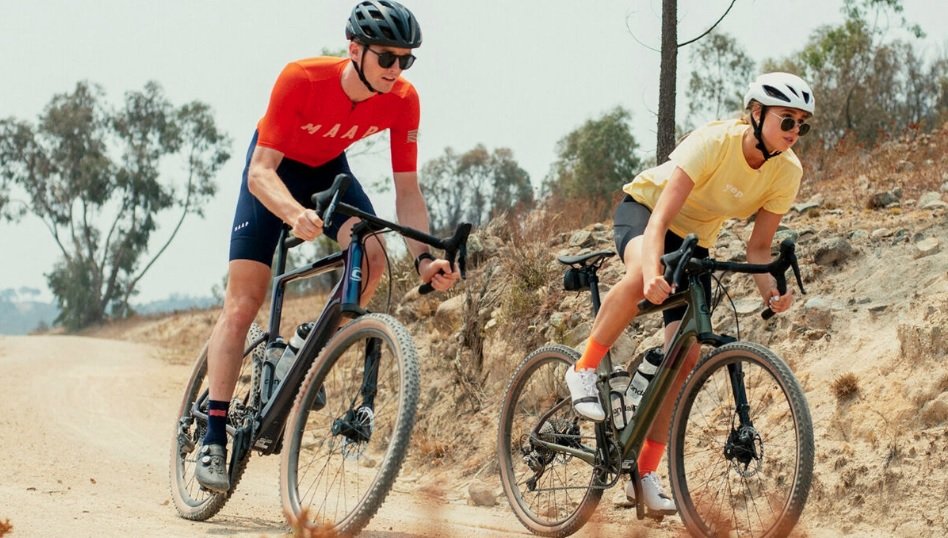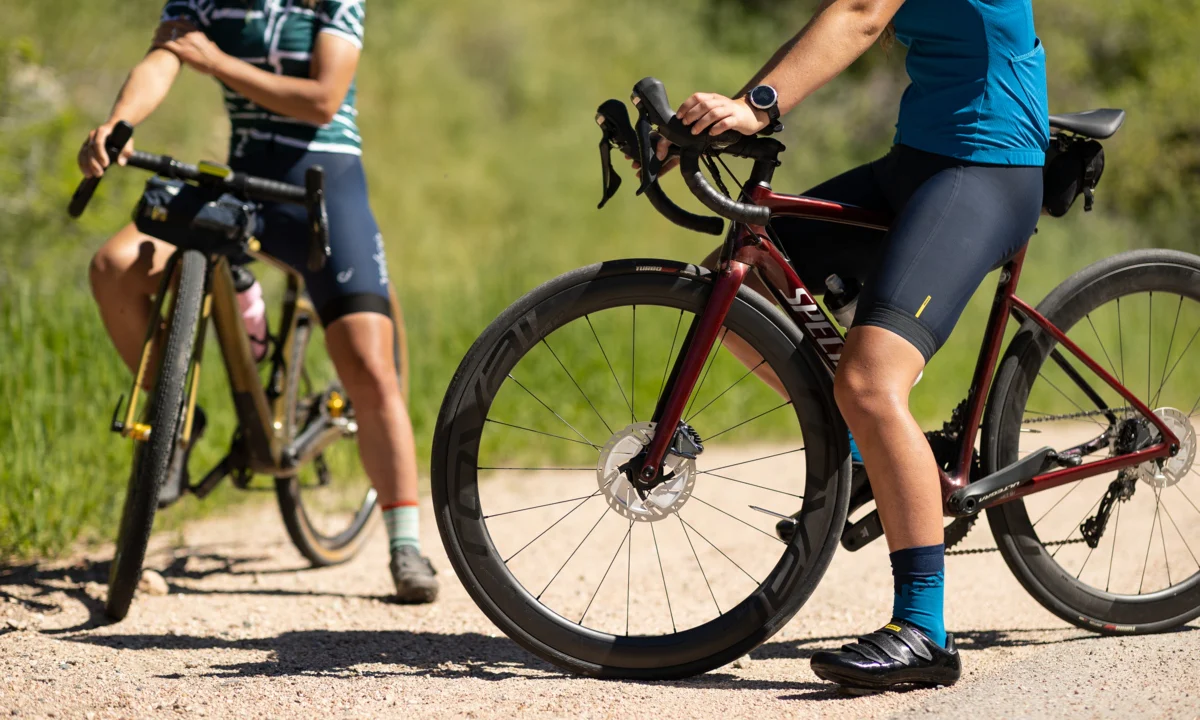Gravel bikes have developed into absolute trend models among bicycles in recent years and are suitable for all surfaces on which racing bikes reach their limits. But where does the gravel bike really differ from the racing bike? What are the strengths and weaknesses of the two types of bikes? You can find out in our guide.
Road bike vs. gravel bike: The most important information at a glance
In this guide, we explain it to you
- What a gravel bike is
- The special features of gravel bikes
- The main differences between gravel bikes and road bikes
- For whom each type of bike is best suited
What is a gravel bike?

At first glance, the gravel bike looks like a racing bike with thicker tyres. In fact, this still relatively new bike variant can be assigned to the “racing bikes” category.
However, unlike road bikes, which are specifically designed for cycling on paved roads, the gravel bike is designed for cycling on gravel, gravel, and dirt tracks. That’s why the term “the bike for all occasions” fits this model perfectly.
Currently, popular gravel bike models are:
- CUBE NUROAD C:62 SL GRAVEL BIKE | 2023
- CANNONDALE TOPSTONE CARBON 4 – GRAVEL BIKE | 2023
- GIANT REVOLT ADVANCED 2
- FOCUS ATLAS 6.8 – GRAVEL BIKE | 2023
The special features of gravel bikes compared to road bikes
The application possibilities for the gravel bike are enormous, as it combines the positive characteristics of the racing bike, in particular its agility, with more grip on unpaved surfaces and a larger selection of possible routes. Ultimately, this leads to significantly more riding fun, and gravel bikes are therefore usually used as an alternative to racing bikes.
Depending on the route, you can certainly keep up with a group of road cyclists with a gravel bike, but the gravel bike tyres have a much higher rolling resistance. The wide handlebars and a lower seating position also have more aerodynamic and biomechanical disadvantages than advantages if you want to be fast on the road.
Road bike vs. gravel bike: These are the biggest differences
In addition to the area of application (surface), it is mainly the details that are not immediately apparent that distinguish gravel bikes from conventional racing bikes and mountain bikes. This includes:
- The tyres
- The driver
- The brake
- Additional features
We will go into this further below.
1. Road bike vs. gravel bike: The tyres
Anyone who buys a gravel bike usually has the choice between a tyre width of 30, 35, or 40 mm. Tyres with a width of 23-28 mm have now become established for racing bikes. Due to the wider tires, the gravel bike has more traction, making it more comfortable to ride than a racing bike. The gravel bike can therefore cope with all road surfaces and with the most diverse weather conditions.
Due to its thinner tyres, the road bike is primarily in its element on paved roads. Higher speeds are also possible there than with a gravel bike.
Most users don’t ride their gravel bikes that often on gravel and gravel roads, preferring to ride on asphalt. Therefore, the golden mean, i.e. 35 mm, is exactly the right tyre width to get along well everywhere.
2. Road bike vs. gravel bike: The handlebars
In contrast to racing bikes, the gravel bike has a higher head tube and often a flared lower link, which provides more stability and better control. The handlebars are also flared, which results in higher air resistance and an upright posture.
In the case of racing bikes, the focus is primarily on aerodynamics. Most road bikes have light carbon handlebars with good damping. However, road bike handlebars offer less comfort, stability, and control than gravel bike handlebars.
3. Road bike vs. gravel bike: The brakes
While there is usually a choice between rim or disc brakes on road bikes, hydraulic disc brakes are almost always installed on gravel bikes. In contrast to rim brakes, disc brakes offer better braking performance and a shorter braking distance, especially in bad weather, wet conditions, or dirt.
4. Additional features of gravel bikes
On some gravel bike models, the saddle can even be lowered (dropper post) so that you can ride while standing. This is useful for mountain bike routes, for example.
Gravel bike or racing bike: Which type of bike is suitable for whom?

Gravel bike or road bike? When faced with this decision, several factors should be considered. Above all, the area of use of the bike and personal preferences influence which bike is the right one.
Thanks to its versatility, buying a gravel bike is worthwhile for anyone who regularly wants or has to cycle different routes. The gravel bike is suitable for long-distance and touring, but also perfect for demanding training. However, sporty cyclists who also like to ride off the beaten track benefit most from this type of bike.
However, if you primarily ride on paved roads and rarely or not at all on gravel paths or other terrain, a road bike is a good choice. Especially if you also place a high value on speed.



